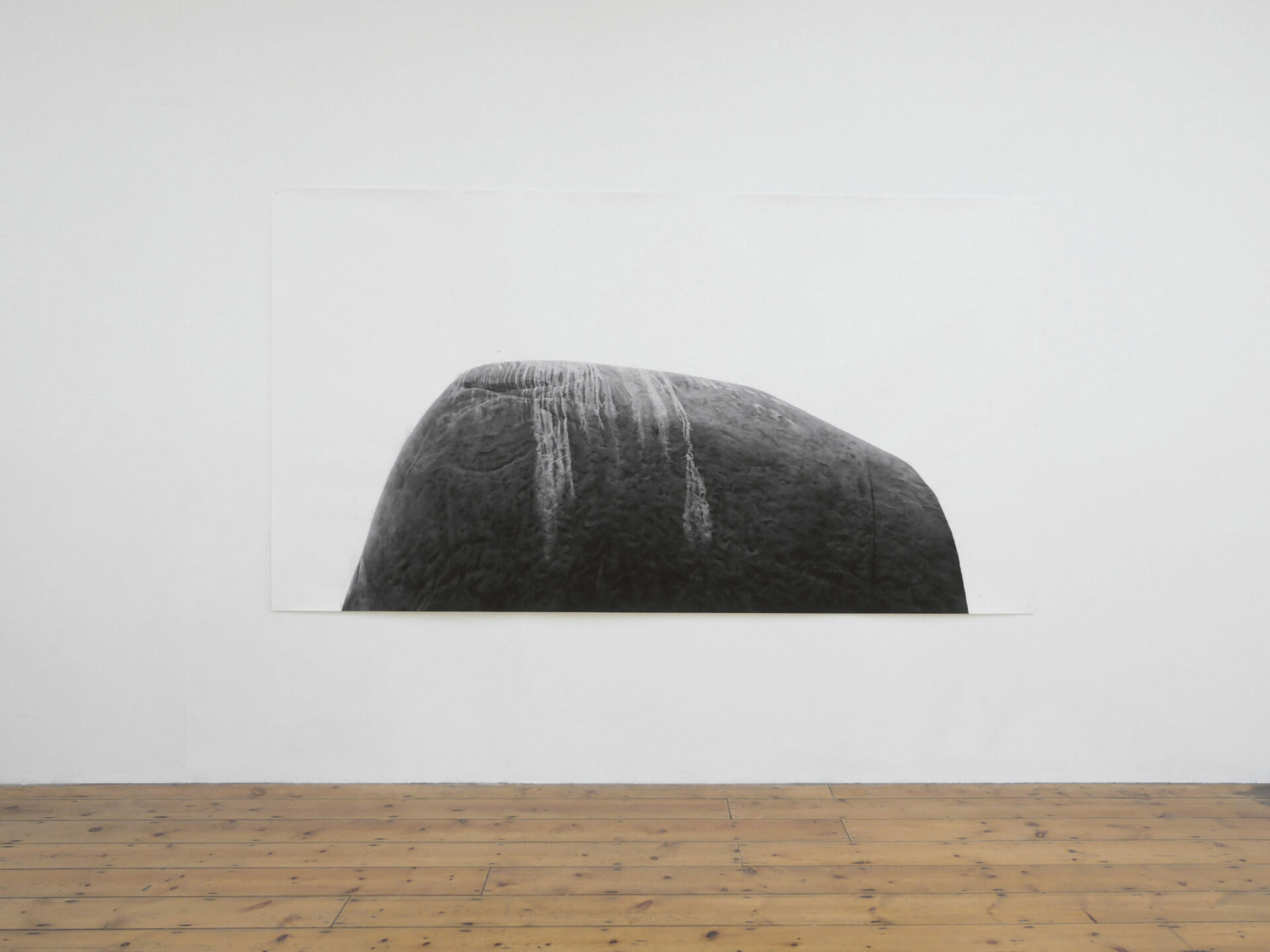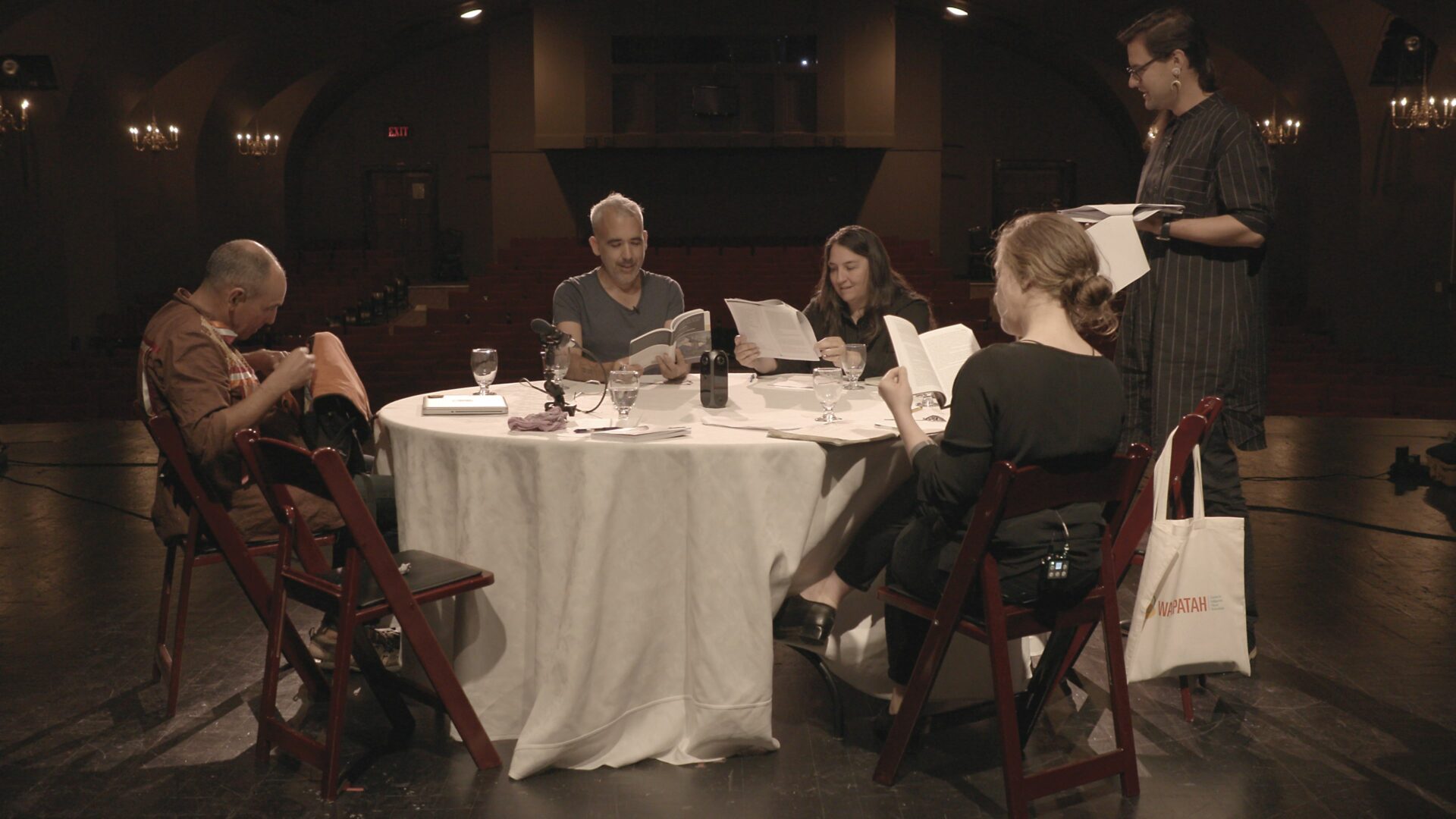
photo : Benny Jaberg, courtesy of the artist
[En anglais]
Sophie Jodoin is currently on a six-month Conseil des arts et des lettres du Québec residency at the Acme studios in East London alongside artists from Australia, Germany, Sweden, and Switzerland. In her exhibition how permanent is permanent, she presents a selection of drawings and photographic prints produced prior to her time in London. Several works in the exhibition incorporate pieces of found text, which the artist often uses as a starting point for her work. This muse will no doubt evolve as a result of her very much non-permanent new studio situation.
Often working in series, Jodoin’s monochromatic conté, charcoal, black gesso, or digitally printed images cover a diverse range of subjects including processed and natural stones, draped fabric, stained film, and stars. Works are hung in pairs and groups, with the eight images in the front room spaced at regular intervals. In contrast, the larger back room holds only two works: a three-metre-long study of a rock and the words “amazingly silent” printed at about a tenth the size of the rock study — a size that belies their epic tone. The edge of the textured rock is neatly erased, creating a border outside of which there is nothing: no background, no contextual information, and most importantly, nothing to indicate scale. This white void runs into the void of the white cube, as if testing its limits. Just inside the front door we have an almost concrete-poetry style answer in the found, sensitively positioned book pages of This Far and No More by Andrew H. Malcolm. Read in this context, however, the work’s legitimizing wooden frames entirely use up the space of the page and also hinder the relation of both text and page to the exhibition space. Similarly the artist’s semiologically charged objects destine them to function only as signs — for slowness, human limitation, withdrawal, and so on.
The more complex conceptualization of these objects within the work sits in line with the pre-Socratic notion of reducing all objects to tinier physical elements: Greek philosopher Thales of Miletus’s claim for instance, that everything was made up of water. When Jodoin first hung her drawings in the space, the moisture in the walls quickly invested them with a slight sag. Water appears in the rock study, titled Untitled (to sb), where the drawn marks of rain and bird droppings are mimics by the artist’s hand and also in the digital print Untitled (cloud graffiti), which shows graffiti that has been partly composed and partly removed, existing as a hybrid of image and stain. Similarly, the grainy luminosity of the starry sky in Galaxy is repeated in the graphitic sheen that coats a metallic curtain and a minecart in the series Intervals. A non-anthropocentric equivalence begins to emerge between human, meteorological, and astronomical producers. Also, each image in Intervals is composed at a common photographic ratio, complicating the exhibition’s intermedial composition. It is these drawn fictions that cumulatively construct Jodoin’s expansive material cosmos.




